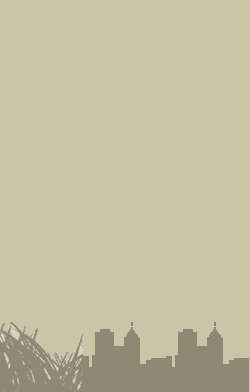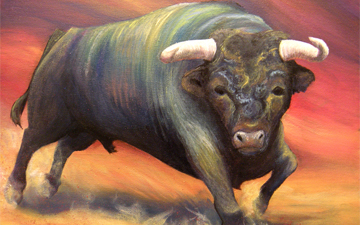A bull is an intact (i.e., not castrated) adult male of the species Bos taurus (cattle). More muscular and aggressive than the female of the species, the cow, the bull has long been an important symbol in many cultures, and plays a significant role in both beef and dairy farming, and in a variety of other cultural activities.
The female counterpart to a bull is a cow, while a male of the species which has been castrated is a steer, ox[1] or bullock, although in North America this last term refers to a young bull, and in Australia to a draught animal. Usage of these terms varies considerably with area and dialect. Colloquially, people unfamiliar with cattle may refer to both castrated and intact animals as “bulls”.
A wild, young, unmarked bull is known as a micky in Australia.[2] Improper or late castration on a bull results in it becoming a coarse steer, also known as a stag in Australia, Canada and New Zealand.[3] In some countries an incompletely castrated male is known also as a rig or ridgling.
The word “bull” also denotes the males of other bovines, including bison and water buffalo as well as many other species of large animals including elephants, camels, elk, moose, and whales.
Bulls are much more muscular than cows, with thicker bones, larger feet, a very muscular neck, and a large, bony head with protective ridges over the eyes. These features assist bulls in fighting for domination over a herd, giving the winner superior access to cows for reproduction.[4] The hair is generally shorter on the body, but on the neck and head there is often a “mane” of curlier, wooly hair. Bulls are usually about the same height as cows or a little taller, but because of the additional muscle and bone they often weigh far more.
In horned cattle the horns of bulls tend to be thicker and somewhat shorter than those of cows, and in many breeds they curve outwards in a flat arc rather than upwards in a lyre shape. It is not true, as is commonly believed, that bulls have horns and cows do not: the presence of horns depends on the breed, or in horned breeds on whether the horns have been disbudded (conversely, in many breeds of sheep it is indeed only the males which have horns).
Castrated male cattle are physically similar to females in build and horn shape, although if allowed to reach maturity they may be considerably taller than either bulls or cows, with heavily muscled shoulders (but not necks).[5]




